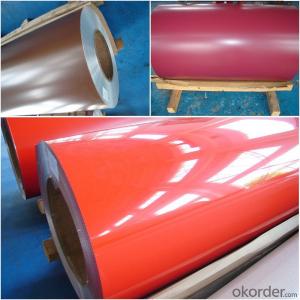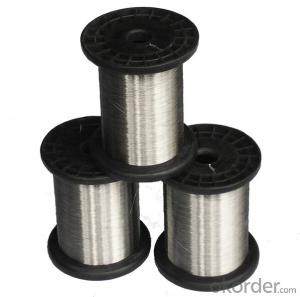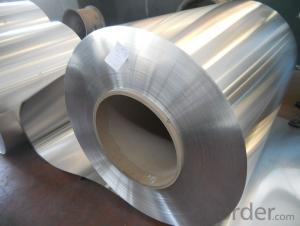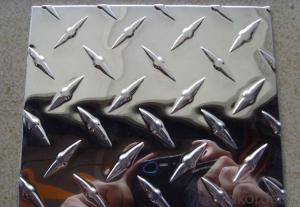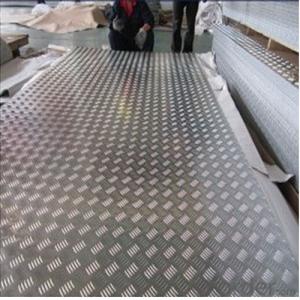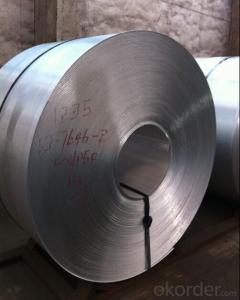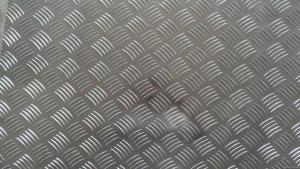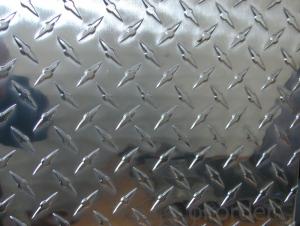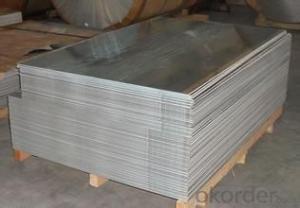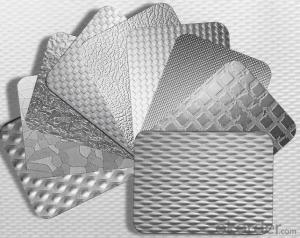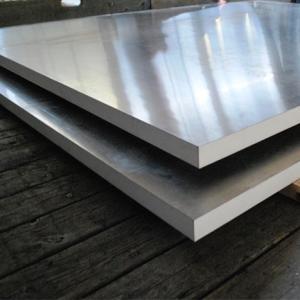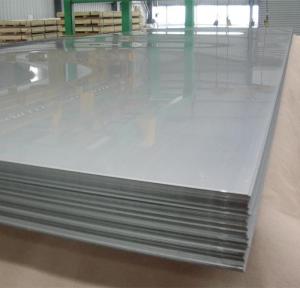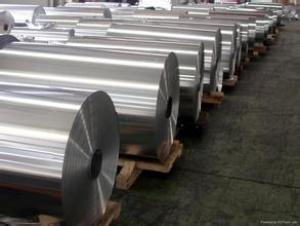Aluminum Diamond Plate Sheets - Competitive Price with High Quality
- Loading Port:
- China main port
- Payment Terms:
- TT or LC
- Min Order Qty:
- 8 m.t.
- Supply Capability:
- 2000 m.t./month
OKorder Service Pledge
OKorder Financial Service
You Might Also Like
Structure of Aluminium Sheet Description:
Aluminium sheet are of a wide range of colors, which gives wonderful appearance no matter in residential and commercial constructions of great exhibition centers.
The Aluminium sheet have been widely used in the fields of construction and decoration( garage doors, ceiling etc.), electronic appliances, lighting decoration, air-condition air pipes, sandwich panels and drainages etc.
Main Features of Aluminium Sheet:
1.bright surface
2.easy process
3.non-stick
4.quick delivery time
Images of Aluminium Sheet:
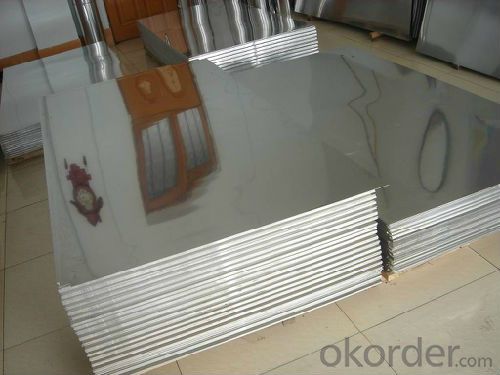

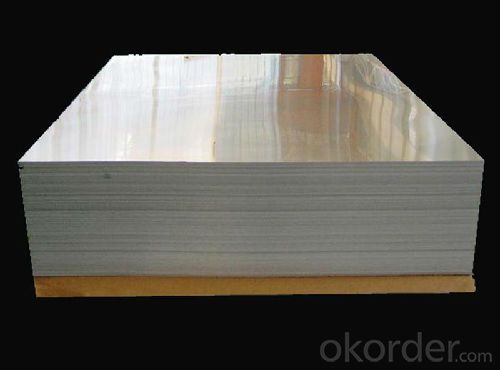
Aluminium Sheet Specification:
| Description | Aluminum circles |
| End Use | Cookware,lamp cover,lighting,Pot, Pan,Lid,untensils,Road Sign Board |
| Alloy | A1050,A1100,A1070,A1060,A3003,A5052 |
| Temper | O(soft),H22,H14,H16,H18 |
| Thickness | 0.2mm to 6.0mm |
| Diameter | 100mm to 1200mm |
| Packing | Export seaworthy packing |
| Surface | Plain,Bright,No Marks |
| Grade | DC and CC |
| Tensile Strength | 60-135mpa |
| Elongation | Min1% |
FAQ of Aluminium Sheet:
What's your processing technique?
Ingot/Master Alloys --- Melting Furnace – Holding Furnace --- D.C. Caster --- Slab ---- Scalper --- Hot Rolling Mill – Cold Rolling Mill – Punching – Annealing Furnace -- Final Inspection – Packing --- Delivery.
According to the order of the thermal conductivity of the metal, corrosion resistance and production cost, refrigerator interior sheet metal is chosen instead of aluminum other metals, to ensure its good thermal conductivity of the premise, as far as possible to reduce costs and the choice of corrosion-resistant material processing, aluminum is the best choice.
Secondly, in order to increase the length of the liner internal exchange area and the outside air heat, refrigerator interior selected embossing plate instead of the flat plate. In the absence of refrigerator interior space cause pressure to increase the use of embossed aluminum air tank wall contact area for a more efficient uniform heat exchange.
Speaking on the cooling rate: according to the laws of physics, thermal conductivity of aluminum is 237W / mK, the thermal conductivity of iron is 80W / mK, the thermal conductivity of the larger the number, the better the thermal conductivity, under the same conditions cooling faster the cooling effect is better. Using embossed aluminum evaporator, cooling rate is 3 times the wire tube evaporator. You can do a little to test in the refrigerator freezer compartment through an aluminum plate on a drop of water drops, 5 seconds into the ice, cooling is very fast!
- Q: This aluminum is on a mobile home. I trying to repaint it and there is alot of areas were rust has ate the metal away. Especially in the seams. How can I get rid of the rust that already exists and stop it from coming back.
- Please check with a place like home depot. You could use some steel wool, to get some of the rust off, then paint over tha area with rustoleum. That helps prevent rust, Hope this helps.
- Q: How do you join aluminum sheets together?
- There are several methods to join aluminum sheets together, depending on the specific application and desired strength of the joint. Here are some common techniques: 1. Welding: Aluminum can be welded using various methods such as gas tungsten arc welding (GTAW or TIG), gas metal arc welding (GMAW or MIG), or even laser welding. These processes involve melting the aluminum at the joint and adding a filler material to create a strong bond. Welding offers excellent strength and durability but requires skill and appropriate equipment. 2. Riveting: Rivets can be used to fasten aluminum sheets together. This method involves drilling holes through the sheets and using a rivet gun to insert and deform a rivet, creating a secure joint. Riveting is relatively simple and quick, but it may not provide the same strength as welding. 3. Adhesive bonding: Industrial adhesive bonding is a popular method to join aluminum sheets. Specialized adhesives formulated for aluminum bonding are applied to the surfaces, which then cure and form a strong bond. Adhesive bonding is advantageous as it distributes stress evenly and can join dissimilar materials. However, it may not be suitable for high-temperature or high-stress applications. 4. Mechanical fasteners: Screws, bolts, or nuts can be used to fasten aluminum sheets together. This method involves drilling holes and using fasteners to secure the sheets. Mechanical fasteners provide good strength and allow for disassembly if needed. However, they may require additional maintenance and can cause stress concentrations around the holes. 5. Clinching: Clinching is a cold joining method where aluminum sheets are pressed together using a punch and die. The process deforms the materials and creates a mechanical interlock, forming a strong joint. Clinching is a quick and cost-effective method, but it may not be suitable for thin or highly rigid sheets. Ultimately, the choice of joining method depends on factors such as the required strength, aesthetics, cost, and ease of fabrication. It is recommended to consult with a qualified professional or follow specific guidelines to ensure a successful and reliable joint.
- Q: 5083 what is the density of the aluminum plate?
- 5083 aluminum alloy is Al-Mg-Si, use a wide range, especially in the construction industry cannot do without this alloy, alloy is the most promising. The main alloying elements as magnesium, has good forming performance, corrosion resistance, weldability, moderate intensity, is a kind of pure aluminum alloy aluminum density: 2.71 tons. / m3 (g / cm3) alloy aluminum density: 2.8 tons / m3 (g / cm3) antirust aluminum density: 2.73 tons / m3 (g / cm3)
- Q: Are aluminum sheets resistant to rust?
- Yes, aluminum sheets are highly resistant to rust due to their natural oxide coating that forms a protective barrier against corrosion.
- Q: How does the reflective film stick to the aluminum plate?
- Put the plate clean, dry, reflective film a head from the aluminum back 2CM at the beginning attached to the aluminum plate, wrapping, pull to the front, back and side brush paper hanging tear reflective film side with the hanging brush to the aluminum paste, try to avoid bubbles.
- Q: How do you remove stains or marks from aluminum sheets?
- To remove stains or marks from aluminum sheets, you can follow these steps: 1. Start by preparing a solution of warm water and mild dish soap in a bucket or basin. 2. Dip a soft cloth or sponge into the soapy water and gently scrub the stained area. Avoid using abrasive materials or harsh chemicals that could scratch or damage the aluminum surface. 3. For tougher stains, you can make a paste by mixing baking soda with water. Apply the paste to the stained area and let it sit for a few minutes before gently scrubbing it with a cloth or sponge. 4. If the stains persist, you can try using a non-abrasive cleaner specifically designed for aluminum surfaces. Follow the manufacturer's instructions on the packaging for the best results. 5. Rinse the aluminum sheet thoroughly with clean water to remove any soap residue. 6. For stubborn stains or marks that are difficult to remove, you can try using white vinegar or lemon juice. Apply a small amount of vinegar or lemon juice to a cloth or sponge and gently rub the stained area. Rinse the aluminum sheet well after using these acidic solutions. 7. After cleaning, it's important to dry the aluminum sheet completely to prevent water spots or streaks. You can use a clean towel or allow it to air dry. Remember to always test any cleaning solution or method on a small, inconspicuous area of the aluminum sheet before applying it to the entire surface. This will help ensure that it doesn't cause any damage or discoloration.
- Q: What is the tensile strength of 101 aluminum sheets?
- The tensile strength of 101 aluminum sheets can vary depending on various factors such as manufacturing process, heat treatment, and specific alloy composition. However, generally speaking, 101 aluminum sheets have a tensile strength of approximately 27,000 to 42,000 pounds per square inch (psi). It is important to note that this range is an approximation and actual tensile strength values may differ slightly. It is recommended to refer to the specific manufacturer's data sheet or conduct further testing to determine the precise tensile strength of 101 aluminum sheets.
- Q: Can aluminum sheets be used for automotive applications?
- Indeed, aluminum sheets find their utility in automotive applications. Being both lightweight and corrosion-resistant, aluminum proves to be an optimal choice for various automotive constituents. Car bodies, engine parts, wheels, and other structural components are commonly constructed using aluminum due to its desirable properties. Aluminum sheets possess an outstanding strength-to-weight ratio, thereby enhancing fuel efficiency and overall vehicle performance. Furthermore, aluminum exhibits commendable thermal conductivity, ensuring efficient heat dissipation in automotive scenarios. Consequently, the utilization of aluminum sheets in automotive production has gained substantial popularity owing to its numerous benefits.
- Q: What are the potential health hazards related to working with aluminum sheets?
- <p>Working with aluminum sheets generally has low health risks. However, inhalation of aluminum dust can cause respiratory issues, such as coughing and shortness of breath. Prolonged exposure may lead to a condition known as metal fume fever. Additionally, aluminum can cause skin irritation in some individuals. It's important to use proper ventilation and personal protective equipment, such as masks and gloves, to minimize these risks.</p>
- Q: Can aluminum sheets be welded or joined together?
- Yes, aluminum sheets can be welded or joined together using various welding techniques such as TIG (Tungsten Inert Gas), MIG (Metal Inert Gas), or spot welding.
Send your message to us
Aluminum Diamond Plate Sheets - Competitive Price with High Quality
- Loading Port:
- China main port
- Payment Terms:
- TT or LC
- Min Order Qty:
- 8 m.t.
- Supply Capability:
- 2000 m.t./month
OKorder Service Pledge
OKorder Financial Service
Similar products
Hot products
Hot Searches
Related keywords








